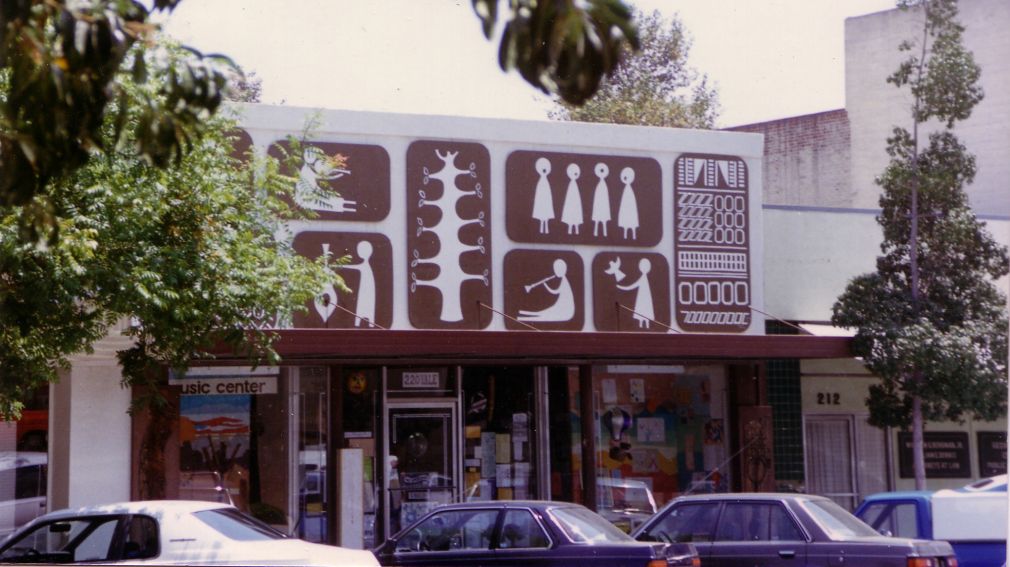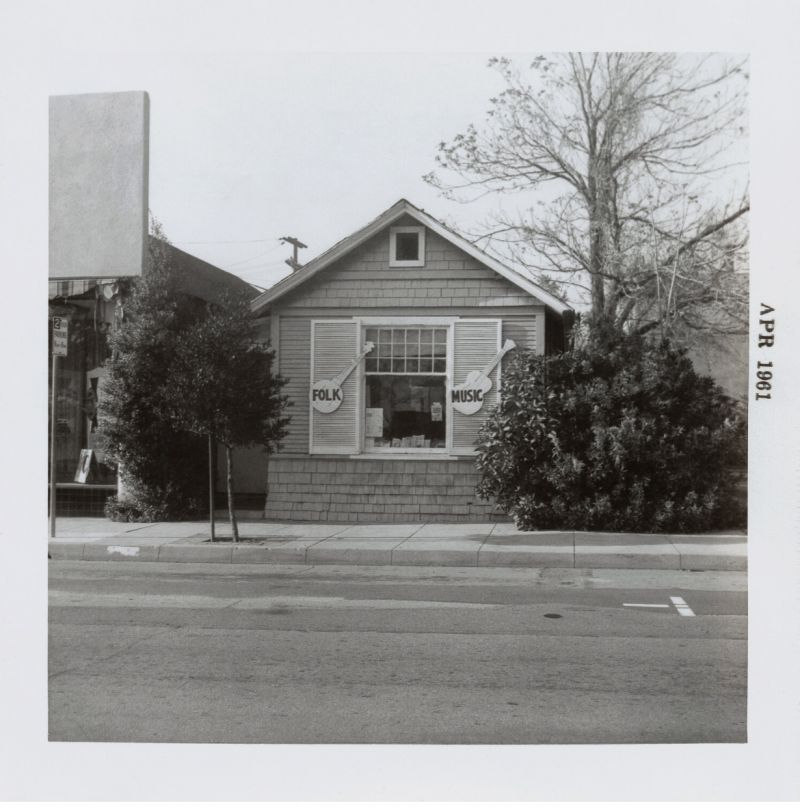Folk Music Center Offers Lessons in Perseverance, Importance of Community

The Folk Music Center is a three-part operation, including a museum, music store, and instructional center. It opened its doors in the back room of a Claremont, California real estate office in 1958 with just a small inventory of records, books, strings, and instruments donning its shelves. It now serves as a thriving hub to the folk music scene of past and present, and this summer, NAMM’s Resource Center team visited The Folk Music Center to document its history and impact on its community.
After quickly outgrowing the small room in the real estate office, Folk Music Center owners Charles and Dorothy Chase moved the enterprise to its own building in Claremont. Dorothy’s father, Albert Udin, ran the day-to-day business while Dorothy taught banjo and guitar, and Charles repaired instruments in their home. The Chase’s quickly became folk music advocates and expanded the reach of folk music in their community in 1965 when they opened a music café, the Golden Ring. While the café was only open for five years, it was one of the first folk music venues in Southern California and hosted artists Guy and Candy Carawan, Gary Davis, John Fahey, Brownie McGhee and Sonny Terry, The New Lost City Ramblers, Doc Watson, and Hedy West, among others.

With the closing of the Golden Ring in 1970, The Folk Music Center outgrew yet another site and moved to a new location in Claremont. Dorothy continued to teach at the new location, and Charles repaired instruments and began teaching the skill to the next generation of musicians. By 1976, The Folk Music Center Museum was established as an official non-profit and displayed its first collection, an 1880s Stauffer Guitar and Stauffer Theorbo, as part of its museum collection. Today the museum houses antique and rare musical instruments and artifacts from around the world.
To keep The Folk Music Center a family-owned business, Charles and Dorothy’s grandson, Ben Harper, purchased the store, and their daughter, Ellen Harper-Verdries, manages the operation. Harper-Verdries opened its doors this summer to host NAMM Music Historian Dan Del Fiorentino and his team as they documented the history of The Folk Music Center and the folk music community in Southern California in a series of oral history interviews.
Reflecting on the experience, Harper-Verdries said, “Dan provided us with a grand opportunity to discuss the importance of a small music store and its contribution to community and culture. It is important to record the history of The Folk Music Center because, over the six decades that we have been in business, we have created, generated, and nurtured generations of music, musicians, art and artists, and community goodwill. The Folk Music Center has reflected what was happening across the country, if not around the world for decades.”
For more information on The Folk Music Center, please visit https://www.folkmusiccenter.com/ and to view more from the NAMM Oral History Collection, please visit www.namm.org/library/oral-history/.